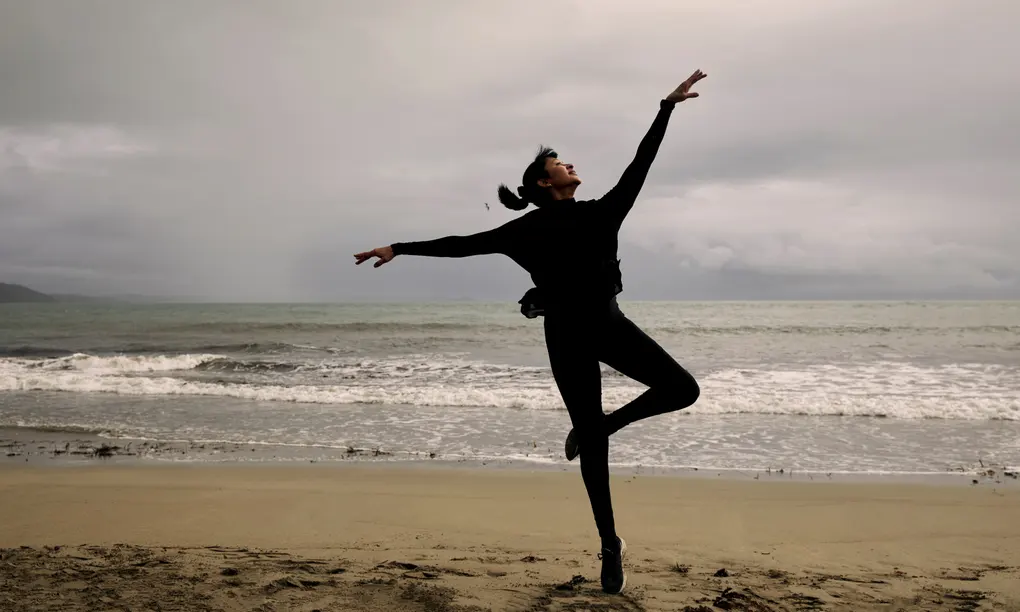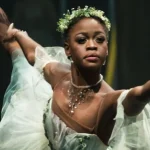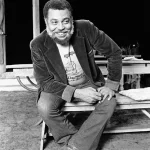Growing up in London, Julie Felix dared to dream. She was determined to dance on the city’s famous stages.
However, Julie Felix would be leaving the UK in the 1970s because a dance company rejected her. She went on to become a star in the United States with the famous Dance Theatre of Harlem, the first classical ballet company to focus on black dancers.
When she began pursuing a dance career, she was told there was no room for a ‘brown swan’ in the London Festival Ballet.
Julie was selected for a dance when she was a student at Rambert ballet school in London. Rudolf Nureyev, ‘the god of British ballet’ was producing Sleeping Beauty with the London Festival Ballet (now the English National Ballet).
On the first day of rehearsal, the Nureyev was late for rehearsal, true to his reputation.
Felix recalls, “He was late, but everybody said he was always late. All of a sudden, the doors flew open and in he came. He was well renowned for these big boots he used to wear and a big fur coat. He took the coat off like a matador and threw it so it slid across the dance studio floor. Everybody jumped up and stood to attention. He was there for probably about half an hour.” At the time, 17-year-old Julie Felix was awestruck. In hindsight, half a century later, she is less impressed: “Talk about unprofessional.”
However, this did not throw her off because in her life’s plan, impressing Nureyev on stage would set her career in motion. She would join the London Festival Ballet and become the first Black British dancer to begin her ascent through the ranks of a British ballet company – this wasn’t the case though.
She was called a “lovely dancer”, but was not going to be given a contract, “because of the colour of my skin. I would mess up the line of the corps de ballet because you can’t have a whole row of white swans and then there’s a brown one at the end.”
These words hit her “like a thunderbolt”. Julie’s mother was white British and her father African-Caribbean, from Saint Lucia. She was not prepared to know that the world of ballet that she longed for is what might be described today as institutionally racist. “It sounds ridiculous, but because I didn’t experience any racial issues or difficulties before that, I didn’t think there was anything wrong with the colour of my skin. I thought that I was talented and that would be enough.”
Having grown up in Ealing, West London, in the 60s, Felix was no stranger to racial differences as she was in a neighbourhood where white faces are rarely seen. After her parents had met on a bench in Hyde Park, her mother’s family who were white disapproved.
They said: ‘If you marry that man, we’re going to disown you.’ And my mum just said: ‘Well, fair enough, I still want to marry him.’”
According to Julie, culturally, the Felix household was “100% British”. She had no connection to her Saint Lucian family but she would see her British grandparents in Essex regularly – especially since they were more cordial when Felix’s elder sister and she were born.
Her parents were both passionate about music and her mum had once aspired to be an opera singer.
“So, when it came to my wanting to dance, there was a local ballet school around the corner in Ealing that I would go to, and Mum said: ‘Well, as long as you keep working hard and you’re enjoying it, I will fund it for you.’ She wasn’t a pushy, stereotypical ballet mother, but she knew that I loved it. And because she’d been stopped doing what she wanted to do, she was there 100% for me.” When she passed the audition for the Rambert, her parents could not afford the fees; Felix won a grant from the Inner London Education Authority, which paid 75%.
In her opinion, “no one is born to dance”, but, as a student, her passion for ballet was boundless. “I can remember the feeling of waking up in the morning, earlier than I needed to, getting on the underground and going into Notting Hill Gate, where the school was. I was the first one in the door. The cleaner was still there.
“I could not get enough of it. My friend and me would stretch and practise our fouettés in the lunch break. We’d be the last ones out of the building. Get back on the train, go home. My feet would be bleeding. I’d have blisters all over my toes. And I didn’t care. I just knew this was what was required. I soaked my feet in saltwater, dabbed surgical spirit on them to get the skin to heal and get them dried out so that I could get up the next morning and get on that train again.”
That is why being turned down simply because of the colour of her skin was devastating. “It didn’t last long, mind you,” she says. “Part of my personality is: sink or swim. And I thought: ‘I am not going to sink here.’ So I just flipped it around and just said: ‘Watch me. I’m going to show you I can do it.’”
Luckily, the Dance Theatre of Harlem (DTH) had come to perform in London the previous summer. Founded in 1969 by Arthur Mitchell, the first top-flight Black dancer in US ballet, a pioneering Black ballet. Felix had auditioned for Mitchell and was immediately offered a contract which she declined. When her teacher at Rambert found out, “she absolutely hit the roof”, Felix recalls. ‘You can’t pick and choose. You’ve been offered a job!’” Fortunately, the DTH returned to London a few months after her Nureyev experience. Felix auditioned and was offered a job a second time – this time, she swiftly accepted.
Her colour became an advantage at DTH. “I’d gone from all of my ballet training, and growing up not being aware of anything to do with Black people, to going to New York and there are no white people.” Before relocating to New York, Felix had never had a passport, left the UK or flown in an aeroplane.
“Within two weeks of being there, Arthur Mitchell said to me: ‘We’ve got to knock the British out of you.’ And I took umbrage because I’m proud of being British,” Felix says. In retrospect, she understood what he meant: “It was the wishy-washy way I approached my technique and my ballet training. But it wasn’t just about that; it was everything that Arthur Mitchell taught and portrayed and wanted us to portray within our work. He wanted to show that Black people really can do this.”
She enjoyed her time at DTH owing to the fact that their sense of purpose aligned with hers. She stayed with the company for 10 years during which she earned her place as a soloist and toured the US and beyond (including a satisfying return to the Royal Opera House).
In her first week in New York, she witnessed a young Black man being shot dead in the street by two white police officers for shoplifting. A touring performance in Mississippi in 1978 had to be cancelled because the Ku Klux Klan staged a protest outside the theatre, in white hoods, burning cross and all. “No words can describe that feeling,” she says. All in all, there were more good times than bad.
Throughout her career, she shared the stage with and danced for dignitaries from Ronald Reagan to her hero, Luciano Pavarotti.
She also danced with Lionel Richie to All Night Long at the 1984 Los Angeles Olympics closing ceremony; visitors to her shows included pop music stars Michael Jackson and Prince. Jackson wanted to cast the dancers in his ill-fated Peter Pan movie, she says.
“I was annoyed because I was there to deliver the performance, but you had all these girls screaming in the audience,” says Felix. “Anyway, after it finished, he came backstage and said to us, very, very quietly: ‘I really enjoyed your performance. I just think you’re fantastic.’ What a humble man.”
A year later, Prince came to a show, by coincidence at the same theatre. He was similarly “incognito”, in a sequined, hooded purple cape. He never took the hood down. “At the end of the performance, he got back in his limo and left and didn’t say thank you, hello, anything. Really quite rude.”
At age 30, the physical toll of her ballet life was dawning on Felix. She also missed home.
She returned to the UK and became a teacher and remedial coach for Sadler’s Wells Royal Ballet, first in London, then in Birmingham – where the company relocated when it became Birmingham Royal Ballet, in 1990. She married and had three daughters none of whom became dancers.

“They don’t seem to know how to really push themselves,” she says. “Ballet is really painful. If you don’t feel that, then you’re not doing it properly.” Ballet has also always required a highly specific form of physicality, Felix points out. “It needs very arched feet, it requires good natural rotation of your hip sockets, a slender body, long, lithe muscles, long neck, small head.” Regardless of talent or musicality, she says, dancers who do not conform to this body type will struggle. Perhaps it is this inherent discrimination that has made other forms of prejudice easier to disguise.
British ballet has become more progressive since the 70s. Birmingham Royal Ballet, for example, had a successful workshop programme with local schools, whose pupils were often from Black, Asian or minority ethnic backgrounds, but such programmes seem to have “fizzled out” as a result of local authority budget cuts.
On the other hand, Felix says, there are institutions such as Ballet Black, which advocate for diversity in professional ballet.
Notably, the Royal Ballet recruited its first Black, British-born male dancer, Solomon Golding, only in 2013.


















